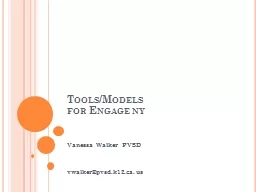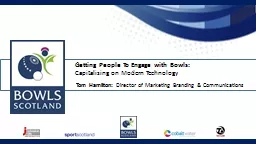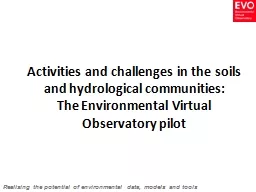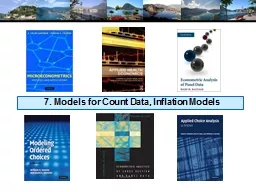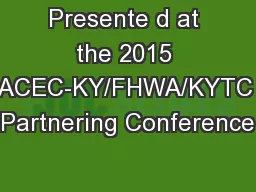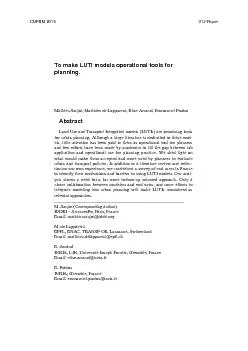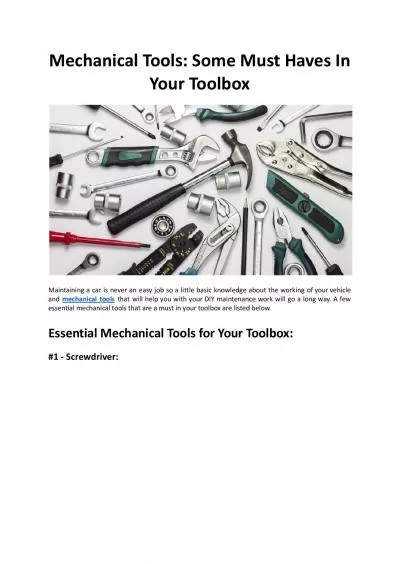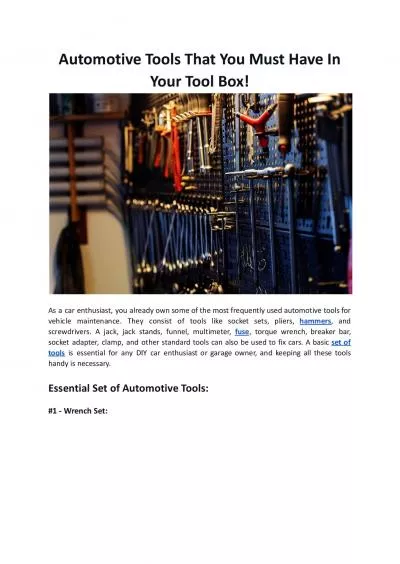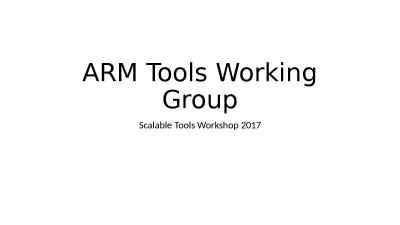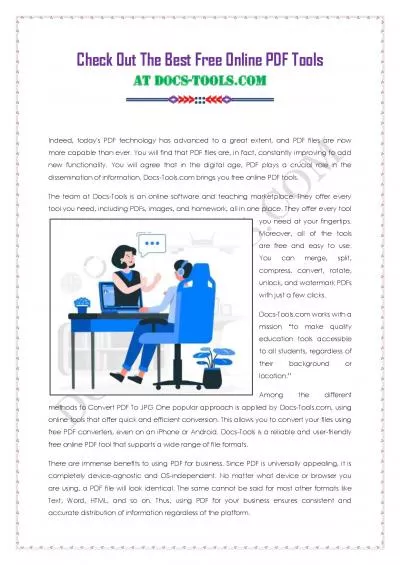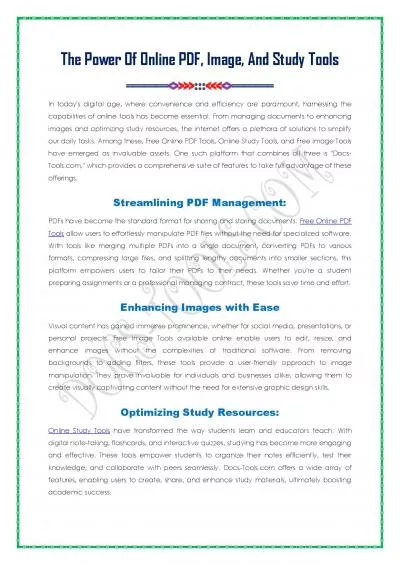PPT-Tools/Models for Engage ny
Author : myesha-ticknor | Published Date : 2018-11-06
Vanessa Walker PVSD vwalkerpvsdk12caus Goal for tonight To provide you with some background knowledge and provide an overview of the tools and models that your child
Presentation Embed Code
Download Presentation
Download Presentation The PPT/PDF document "Tools/Models for Engage ny" is the property of its rightful owner. Permission is granted to download and print the materials on this website for personal, non-commercial use only, and to display it on your personal computer provided you do not modify the materials and that you retain all copyright notices contained in the materials. By downloading content from our website, you accept the terms of this agreement.
Tools/Models for Engage ny: Transcript
Download Rules Of Document
"Tools/Models for Engage ny"The content belongs to its owner. You may download and print it for personal use, without modification, and keep all copyright notices. By downloading, you agree to these terms.
Related Documents

